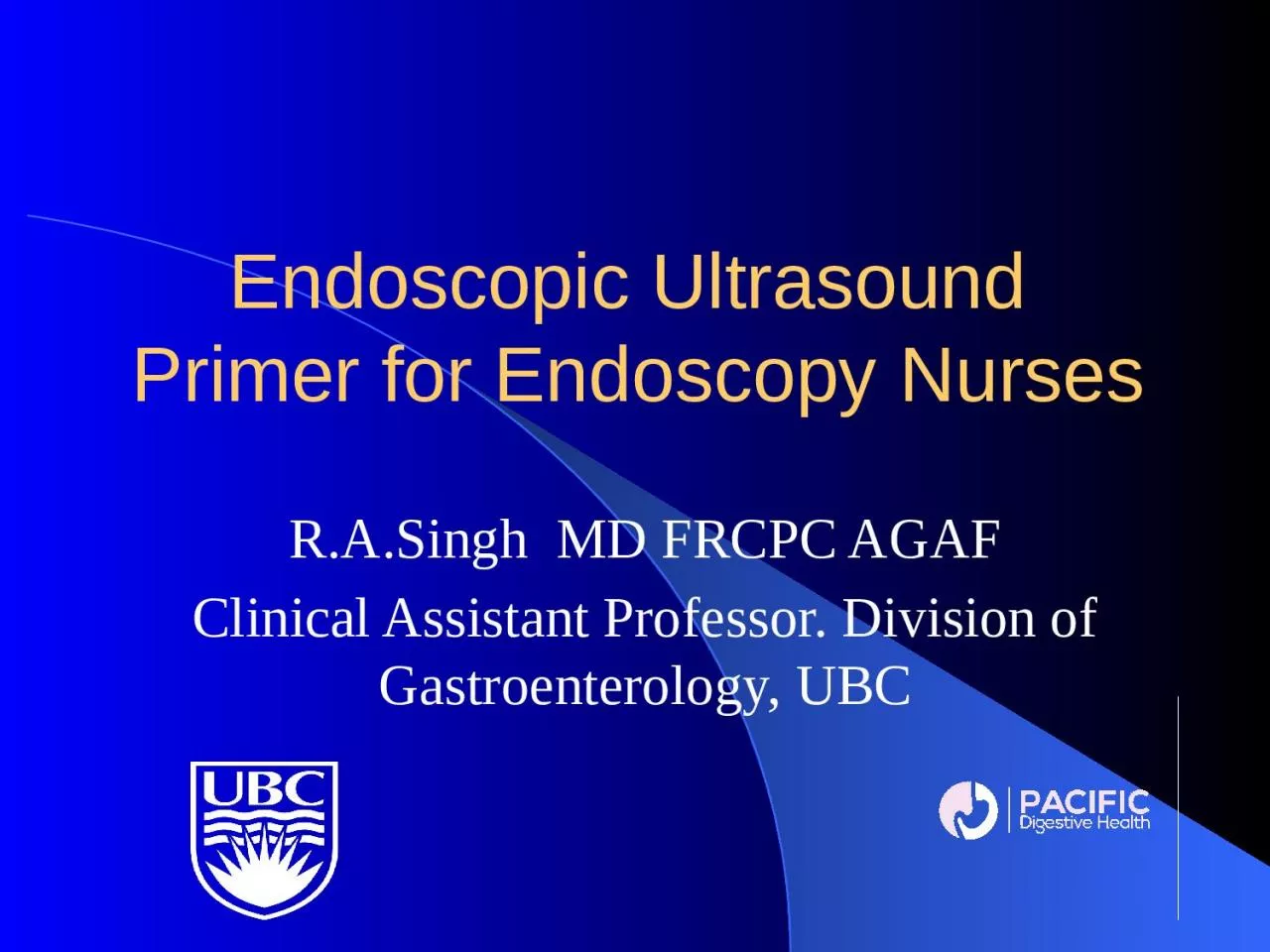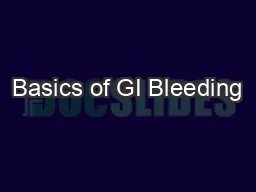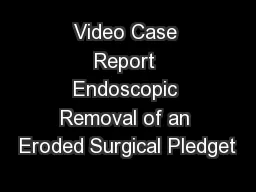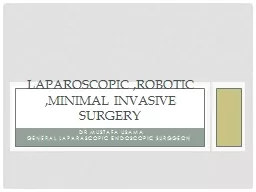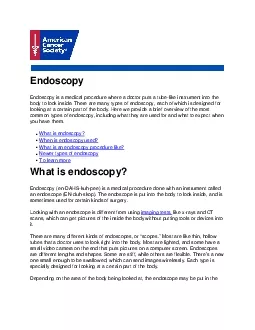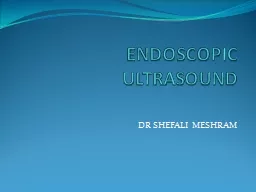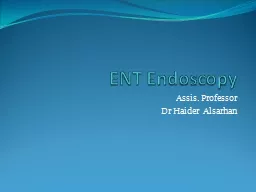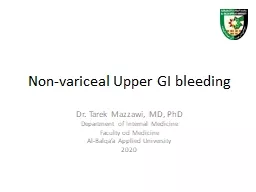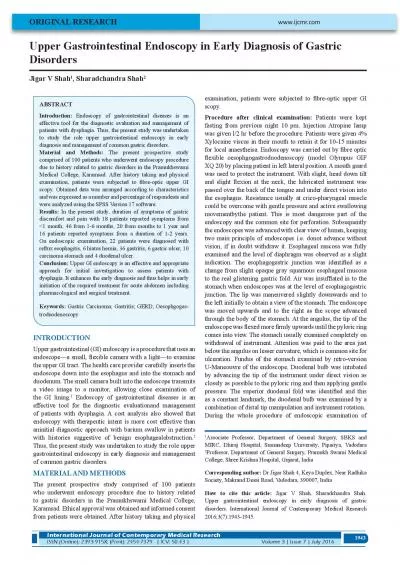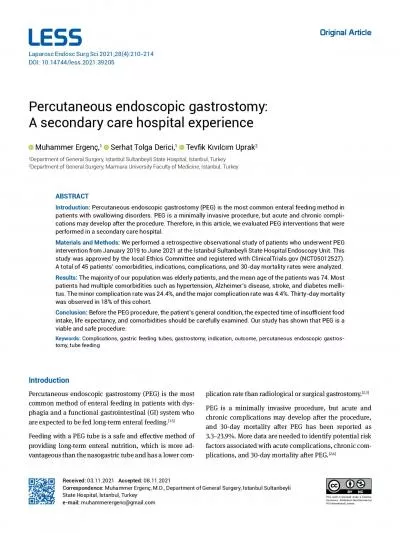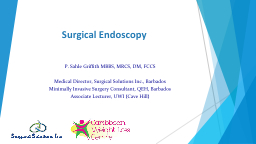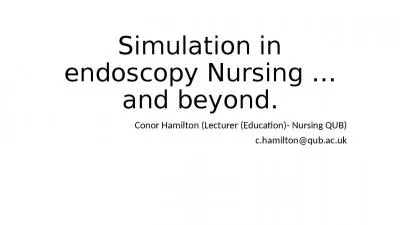PPT-Endoscopic Ultrasound Primer for Endoscopy Nurses
Author : mary | Published Date : 2022-06-11
RASingh MD FRCPC AGAF Clinical Assistant Professor Division of Gastroenterology UBC Disclosures Speaker Honorarium Takeda Abbvie Janssen
Presentation Embed Code
Download Presentation
Download Presentation The PPT/PDF document "Endoscopic Ultrasound Primer for Endosc..." is the property of its rightful owner. Permission is granted to download and print the materials on this website for personal, non-commercial use only, and to display it on your personal computer provided you do not modify the materials and that you retain all copyright notices contained in the materials. By downloading content from our website, you accept the terms of this agreement.
Endoscopic Ultrasound Primer for Endoscopy Nurses: Transcript
Download Rules Of Document
"Endoscopic Ultrasound Primer for Endoscopy Nurses"The content belongs to its owner. You may download and print it for personal use, without modification, and keep all copyright notices. By downloading, you agree to these terms.
Related Documents

